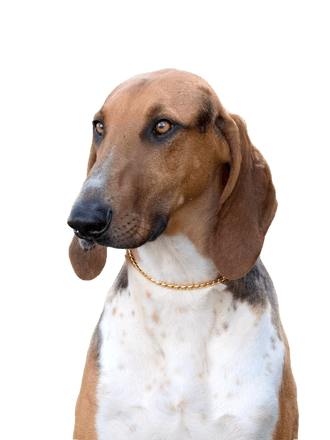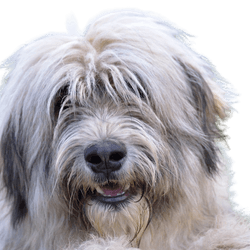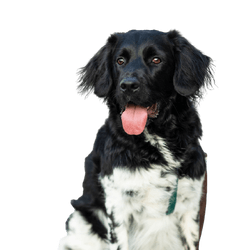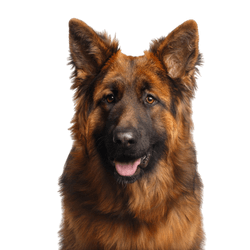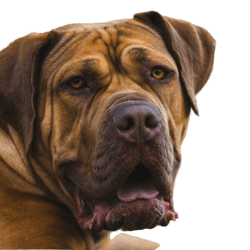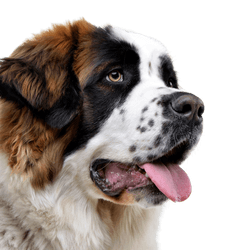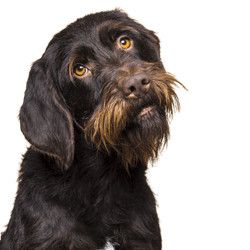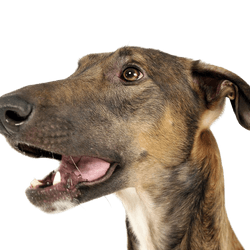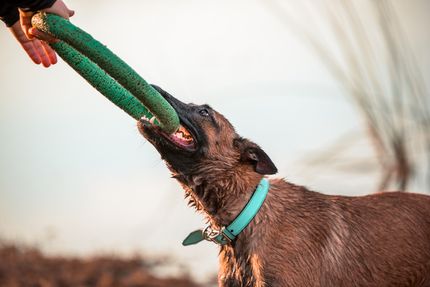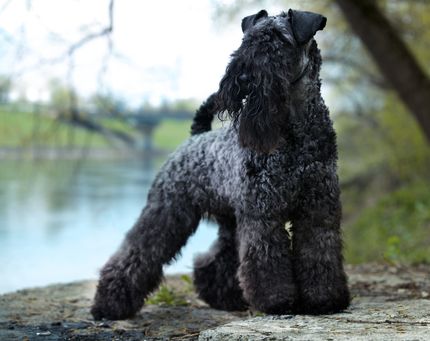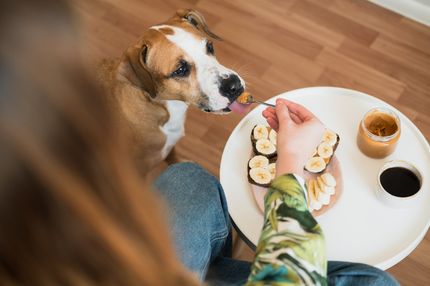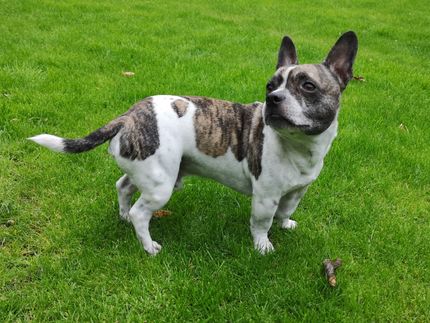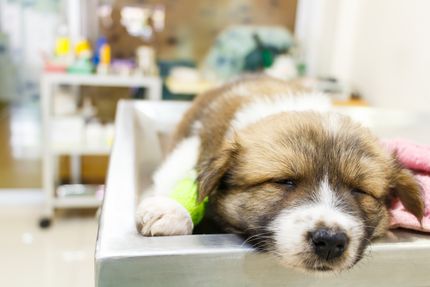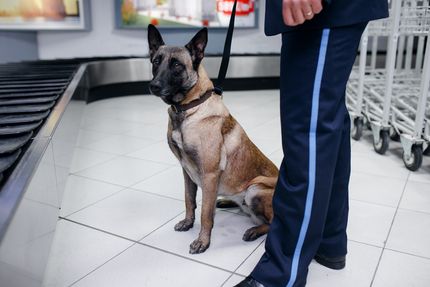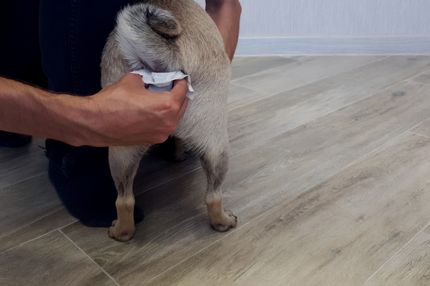Facts & Origin
Origin & Origin
The Poitevin, sometimes called the Poitou dog , originates from the Poitou region in western France. This dog is often admired for its impressive appearance and distinctive build.
Historical review
- Middle Ages: The roots of the Poitevin go back to the Middle Ages. He was originally used for hunting wild boar.
- Crossbreeding: Over the centuries, the breed has evolved through crossbreeding with various other hunting dogs, most notably the Grand Bleu de Gascogne.
- Difficult times: Despite its long history, the breed has had to experience several setbacks. Especially after the French Revolution and the two World Wars, the existence of the Poitevin was threatened.
Suitability & Intended Use
- Hunting Dog: Traditionally used as a running dog, the Poitevin has a keen sense of smell and is still used in large-scale hunts in France.
- Family dog: Away from the hunt, he can prove himself as a loving family dog, provided he gets enough exercise and mental stimulation.
- Companion Dog: With its balanced nature and friendly disposition, it is also well suited as a companion dog, especially in rural areas.
The Poitevin is a symbol of the rich history and tradition of French hunting culture. However, his suitability goes beyond the hunting field and extends to various areas of life, where he can shine both as a loyal companion and as a powerful worker.
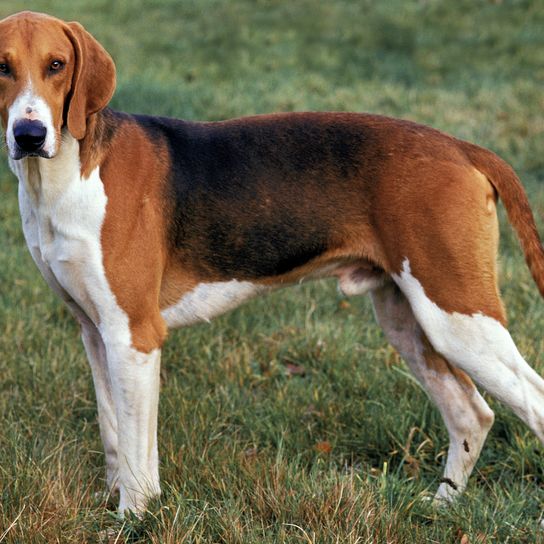

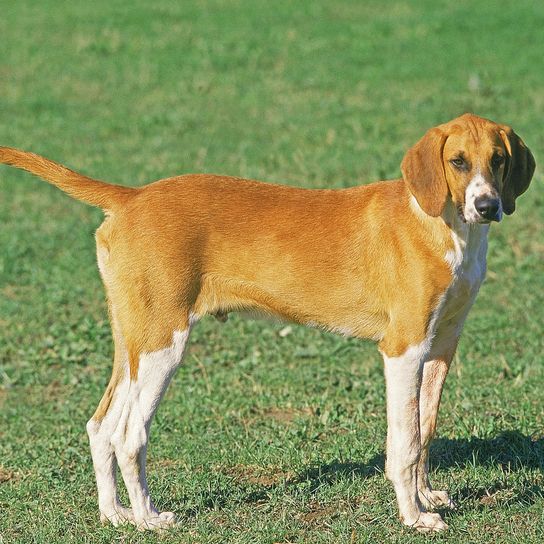
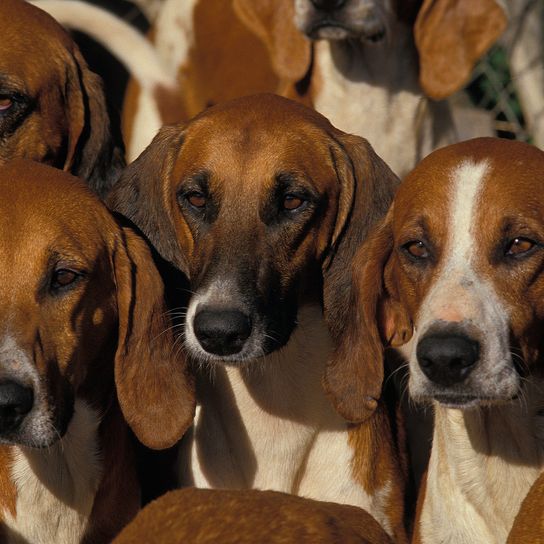
| Alternate Name | Haut-Poitou |
| Origin | France |
| Life expectancy | 11 - 13 years |
| Care requirements | low-maintenance |
| Activity level | average to high |
| FCI group | Scent hounds |
| AKC group | not recognised |
| KC group | not recognised |
Attitude, character and temperament of the breed
Basic nature
The Poitevin, often referred to as the majestic hunter, is primarily a working dog with a deep-rooted hunting tradition. It is a breed prized not only for its physical prowess, but also for its outstanding character.
Unique traits
- Enthusiasm for work: The Poitevin shows a tireless work ethic and pursues its tasks with enthusiasm.
- Independence: as a running dog, it has an independent character, which means that it sometimes needs a fixed guide.
- Sociality: Despite his independence, he is friendly and sociable toward people and other dogs.
In the family
Within the family, the Poitevin shows himself to be a loving and loyal family member. He is especially gentle with children and can integrate well into a hectic family life.
- Enthusiasm for work: The Poitevin shows a tireless work ethic and pursues his tasks with enthusiasm.
- Independence: As a running dog, he has an independent character, which means that he sometimes needs a fixed guide.
- Sociality: Despite his independence, he is friendly and sociable towards people and other dogs.
- Activity needs: it is important to emphasize that the Poitevin has a high need for exercise. Regular walks and activities are necessary to keep him happy and healthy.
Education & Training.
Although intelligent, his independence can sometimes make training a challenge. Consistent but loving training is therefore crucial. Positive reinforcement methods are especially beneficial to his training.
In summary, the Poitevin is an impressive dog in both physical appearance and character. With proper management and environment, he will develop into a valuable and loving companion.
Character
Usage
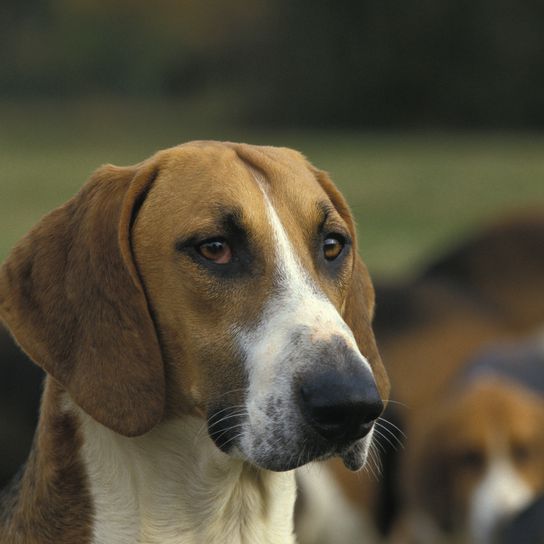
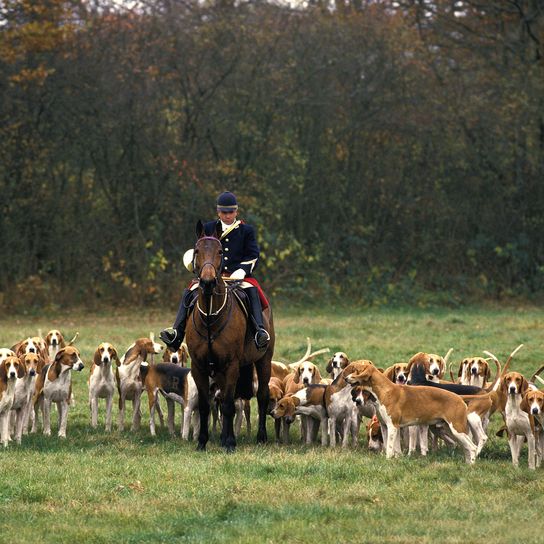
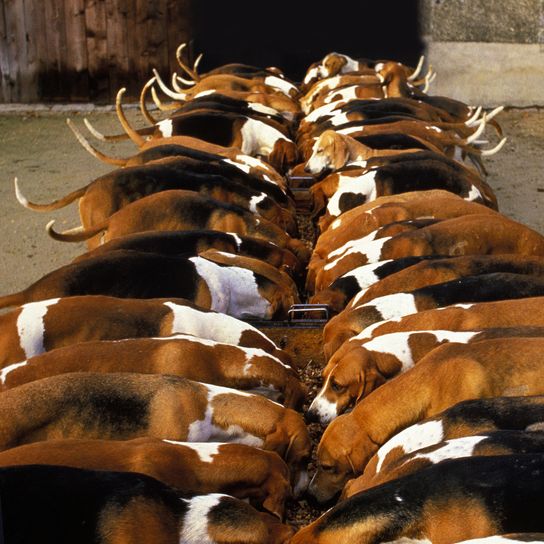
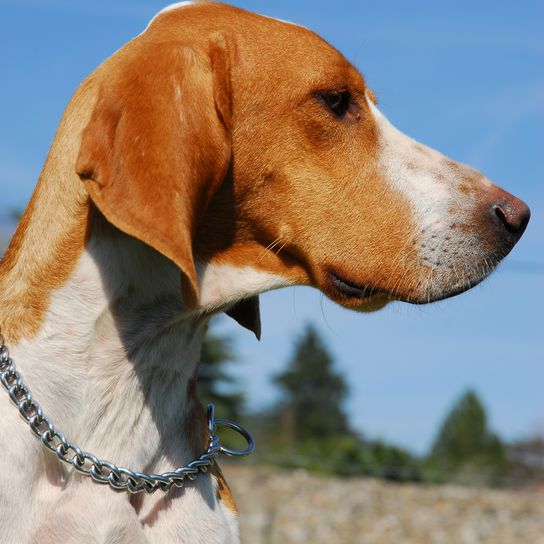
Care of the Poitevin
The Poitevin is relatively low maintenance due to its short and dense coat:
- Regular brushing: Brushing once a week removes dead hair and promotes a healthy skin condition.
- Bathing: It is recommended to bathe the Poitevin only when necessary to avoid stripping the natural oil from the skin.
- Ear Check: Since his ears are droopy, they should be checked regularly for signs of infection.
- Claws: These should be trimmed every few weeks unless they wear down on their own.
Health & Prevention
Despite his hardy nature, there are some health issues to be aware of with the Poitevin:
- Hip Dysplasia: A genetic condition, but can be detected early with regular exams.
- Ear problems: Due to his drooping ears, ear infections can occur.
- Eye exams: Should be done regularly to detect any diseases early.
Breeding the Poitevin
Breeding the Poitevin requires special knowledge and a commitment to the breed:
- Genetic testing: before breeding, potential parents should be tested for heritable diseases.
- Litter planning: careful selection of breeding partners is critical to maintain breed standards and minimize health problems.
- Socialization: Puppies should be well socialized from the beginning to ensure that they will be well-balanced animals as adults.
The Poitevin, like all dogs, requires attentive care and health precautions. However, with responsible breeding, many health problems can be minimized and the well-being of this impressive breed can be assured.


Coat texture
The Poitevin, sometimes referred to as the "Poitou dog", has a short, dense coat that protects it from adverse weather conditions.
Color: The coat of the Poitevin can come in various color combinations. Tricolor (black, white and brown) or bicolor (mainly black and white) are popular.
Grooming: The Poitevin's short coat is easy to groom, but should be brushed regularly to remove loose hair and promote natural shine.
Visual Appearance
The Poitevin is notable for its elegant appearance and athletic build:
Head: He has a noble head with a straight nose and a slight stop.
Eyes: The eyes are oval, dark and convey an alert and intelligent expression.
Ears: The ears are of medium length, thin and hang down elegantly.
Size & Weight
The Poitevin is known for its impressive size and slender stature:
Height: the average height for males is between 62-72 cm, while females usually measure between 60-70 cm .
Weight: Despite its size, the Poitevin is a relatively light dog with an average weight of 30-35 kg for males and 28-33 kg for females.
With its glossy coat, proud bearing and athletic build, the Poitevin is not only an outstanding hunter, but also an impressive sight. Its elegant appearance reflects its noble origins and long history in French culture. With proper care, this dog is sure to catch everyone's eye.
| Fur length | short |
| Fur | flat coated |
| Ear shape | Floppy Ear |
| Tail | lang |
| Anatomy | rugged |
| Size ♀ | 60 - 70 cm |
| Weight ♀ | 30 - 33 kg |
| Size ♂ | 62 - 72 cm |
| Weight ♂ | 30 - 35 kg |
| Suitable For | - |



